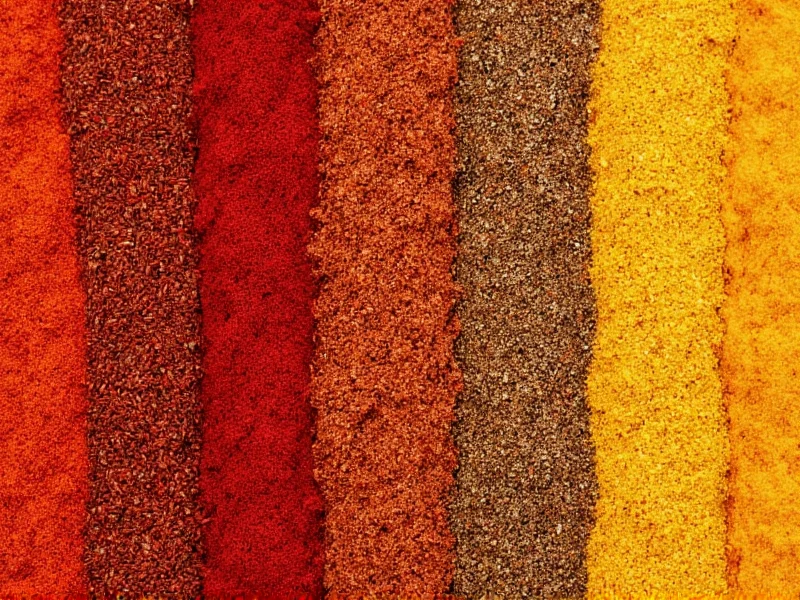Savory spices form the backbone of countless culinary traditions worldwide. These seasonings create the rich, complex flavor foundations that transform simple ingredients into memorable dishes. Understanding what makes a spice “savory” helps home cooks and professional chefs alike build balanced, satisfying meals.
Defining the Savory Flavor Profile
The culinary term “savory” describes flavors that are distinctly non-sweet, often characterized by umami (the fifth basic taste), herbal notes, earthiness, or saltiness. When asking what is spice savory, it's essential to recognize that “savory” isn't a specific spice but rather a flavor category. This distinguishes it from sweet spices like cinnamon, allspice, or cloves commonly used in desserts.
Savory spices typically enhance the natural flavors of ingredients rather than masking them. They work synergistically with proteins, vegetables, and grains to create depth without overwhelming the palate. The most versatile savory seasonings share certain characteristics:
- Low sugar content compared to sweet spices
- Earthy, herbal, or pungent flavor notes
- Ability to withstand longer cooking times
- Complementary pairing with salt and umami-rich ingredients
Common Savory Spices and Their Uses
Understanding what is spice savory requires examining specific examples. Here are the most widely used savory spices and their culinary applications:
| Spice | Flavor Profile | Best Culinary Uses |
|---|---|---|
| Black Pepper | Pungent, slightly floral, warm | Universal seasoning for meats, vegetables, sauces; enhances other flavors |
| Garlic Powder | Earthy, pungent, slightly sweet when cooked | Rubbed on meats, added to sauces, soups, and vegetable dishes |
| Onion Powder | Sweet-earthy, mellow when cooked | Base for sauces, soups, stews, and meat rubs |
| Thyme | Earthy, slightly minty, floral | Roasted meats, braises, vegetable dishes, and French cuisine |
| Rosemary | Pine-like, woody, robust | Lamb, roasted potatoes, breads, and Mediterranean dishes |
| Paprika | Varies from sweet to smoky to hot | Stews, rubs, deviled eggs, and Spanish/Central European cuisine |
Savory vs. Sweet vs. Spicy: Understanding Flavor Categories
Many beginners confuse what is spice savory with spicy or sweet seasonings. Understanding these distinctions is crucial for balanced cooking:
- Savory spices create depth without heat or sweetness (e.g., thyme, garlic, bay leaves)
- Sweet spices contain natural sugars and warming notes (e.g., cinnamon, nutmeg, allspice)
- Spicy seasonings produce heat (e.g., cayenne, chili flakes, black pepper in large quantities)
A single spice can sometimes bridge categories. For example, black pepper is both savory and spicy, while paprika ranges from sweet to hot depending on variety. The context of use determines whether a spice functions primarily as savory, sweet, or spicy in a particular dish.
Building Flavor with Savory Spice Blends
Professional chefs and home cooks often combine individual savory spices to create signature blends. These combinations demonstrate what is spice savory in practical application:
- Herbes de Provence: Thyme, rosemary, oregano, and marjoram for Mediterranean dishes
- Italian Seasoning: Basil, oregano, rosemary, and thyme for tomato-based sauces
- Cajun/Creole Seasoning: Paprika, garlic powder, onion powder, and cayenne for bold flavors
- Everything Bagel Seasoning: Garlic, onion, sesame, and poppy seeds for versatile topping
When creating your own blends, start with a 4:2:1 ratio—four parts primary spice (like garlic powder), two parts secondary (like onion powder), and one part accent (like thyme). This approach ensures balanced savory seasoning without overwhelming any single flavor.
Practical Tips for Using Savory Spices
Understanding what is spice savory extends to proper usage techniques:
- Bloom spices in oil: Heating dried spices in fat for 30-60 seconds intensifies their flavor compounds
- Add early for depth: Earthy spices like cumin or paprika benefit from longer cooking times
- Add late for brightness: Delicate herbs like basil or dill should be added near the end of cooking
- Grind whole spices fresh: Whole peppercorns or cumin seeds retain flavor longer than pre-ground versions
- Balance with acid: A splash of vinegar or citrus can brighten heavy savory flavors
Remember that savory spices work best when they enhance rather than dominate a dish. The goal is to create layered flavors where no single seasoning overwhelms the others.
Common Misconceptions About Savory Spices
Several misunderstandings persist about what is spice savory:
- Misconception: All herbs are savory
Reality: While most culinary herbs are savory, some like mint or lemon verbena have sweet applications - Misconception: Savory means salty
Reality: Savory refers to umami and herbal notes; salt enhances but doesn't define savory flavors - Misconception: Savory spices can't be used in vegetarian cooking
Reality: Savory spices create depth in plant-based dishes, especially when combined with umami sources like mushrooms
Understanding these distinctions helps cooks use savory spices more effectively across various dietary preferences and cooking styles.
Exploring Global Savory Spice Traditions
Different culinary traditions have distinctive approaches to what is spice savory:
- Mediterranean: Focuses on herbal notes (oregano, rosemary, thyme) with garlic and olive oil
- Asian: Emphasizes umami through fermented ingredients (soy sauce, fish sauce) with ginger and garlic
- Mexican: Combines earthy spices (cumin, oregano) with chili varieties for complex heat
- Indian: Uses layered spice combinations (garam masala, curry blends) with toasted whole spices
Exploring these global traditions expands your understanding of savory flavor possibilities beyond basic seasoning.
Storing Savory Spices Properly
To maintain the quality of your savory spices:
- Store in airtight containers away from light and heat
- Replace ground spices every 6-12 months; whole spices last 1-2 years
- Freeze delicate herbs like basil to preserve flavor
- Keep spices away from steam and moisture sources
Fresh, properly stored spices make a significant difference in achieving the intended savory flavor profile in your dishes.











 浙公网安备
33010002000092号
浙公网安备
33010002000092号 浙B2-20120091-4
浙B2-20120091-4